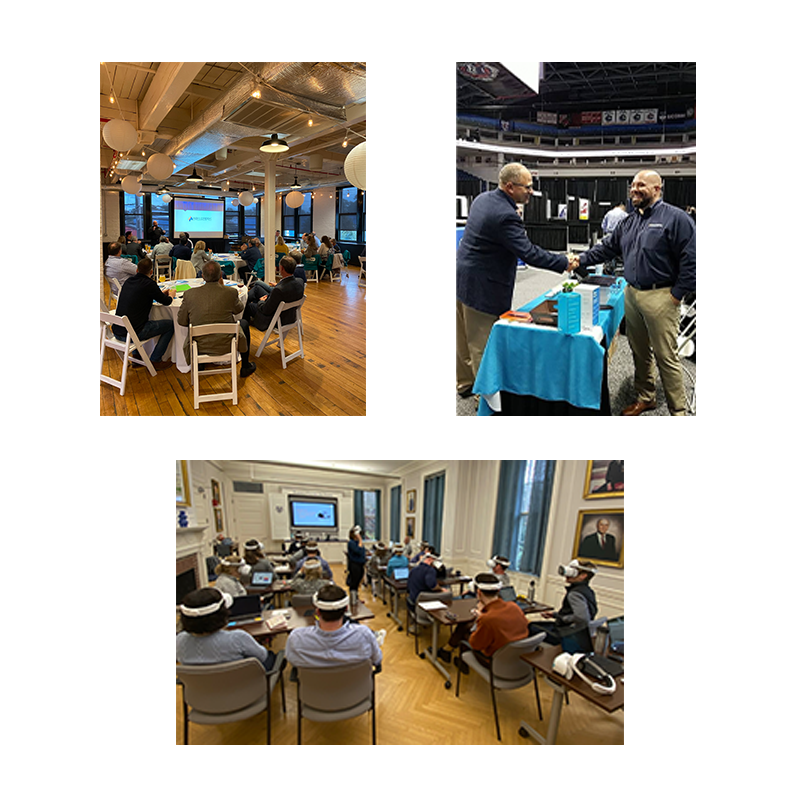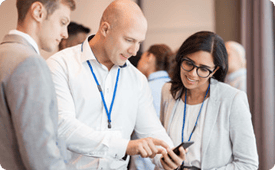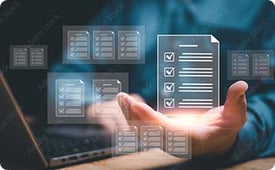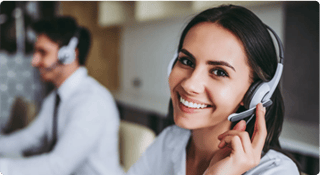Connecticut's Top MSP
Friendly, responsive IT services from a local, award-winning partner.
Begin your IT transformation today.
Get started today by reserving a quick online meeting with one of our experienced consultants.
Book A Meeting
Welcome to Sourcepass
We're the Connecticut IT team your business needs.
The former home of Ash Creek Enterprises, the Sourcepass Connecticut office specializes in a wide range of services, including tailored IT services and solutions for businesses of all size, from small to enterprise. In addition, we serve a broad network of educational institutions and non-profit organizations in Stratford, Fairfield County and throughout Connecticut. We are committed to providing each and every one of our clients with high quality service and support.
Located directly off of CT15 and minutes from I95, Sourcepass is Connecticut's premier Managed Services Provider, offering 24x7 help desk and security operations, and so much more.
IT Services You Can Count On
Let Us be Your Partner for Everything IT
Comprehensive technology and support for your business.
Our managed services offering delivers a responsive and innovative managed IT services engagement to support your business and drive growth.
We provide the technical support, project expertise, strategic guidance, and innovative technology solutions to transform your company into a modern, secure, cloud-enabled business.
Our certified team focuses on implementation, support, and expert administration of cloud, cyber security, and collaboration solutions focused around the Microsoft ecosystem.
Flexible Plans, Comprehensive Security.
Choose from fully managed or co-managed service plans that are scalable and customizable to meet your exact business needs.
We'll also provide our comprehensive security suite to protect your employees, devices, and network against security threats while ensuring your data and applications remain available and protected against loss.
Rely on our award-winning team.
Our experienced, award-winning team focuses on developing a personal relationship with our clients, learning about your business needs and how best to apply technology to solve problems and create new opportunities.
Benefits of Hiring an MSP |
|
|
Complete Coverage Rest assured knowing that your IT systems are being monitored 24x7 to optimize performance, reduce downtime, respond to security alerts, and protect your data. |
|
|
Industry Expertise With advanced certifications and training, our team will ensure that your business stays current with the most up-to-date technologies and best practices. |
|
|
Predictable Budget With our flexible monthly subscriptions, you’ll be able to accurately project your IT spend without any surprises. |
|
|
Availability Enjoy 24/7 security and network monitoring and access to a diverse team that is unaffected by sick leave, vacation, or turnover with 3x more availability than traditional in-house individuals. |
|
|
Performance & Reporting Receive in-depth analytics on service requests, security, asset management, licensing, and full insight into the overall IT health of your organization. |
|
|
Comprehensive CoverageOur managed IT service plans include administration and support for your employees, their devices, your network, servers, and all of the cloud solutions your company needs.
|
|
|
Live Help DeskOur US-based support team works in real-time to provide rapid response to your end users. Contact us by phone, email, and via our support portal and enjoy the benefits of a responsive IT team.
|
|
|
24 x 7 MonitoringExperience peace of mind knowing that every device in your network is monitored at all times. Our team will keep your infrastructure in good health by responding to issues before they disrupt your productivity.
|
|
|
Strategic IT LeadershipEnjoy the benefits of a virtual CIO/CTO and strategic guidance on industry best practices. From budgeting forecasts to technology updates, you’ll have an expert team advising you how to achieve your long-term goals. |
|
|
Cyber SecurityWe’ll safeguard your company’s most valuable assets: your employees and your data. We provide a multi-layer defense to protect against phishing, viruses, data loss, and ransomware threats.
|
|
|
Cloud Backup & Disaster RecoveryYour data is crucial to your business and the target of constant threats — from hackers to ransomware. As part of your plan, we’ll monitor your backups to ensure quick recovery from any loss or compromise.
|
|
|
Online Portal & ReportingWe strive to be fully transparent with our clients. You’ll receive detailed regular reporting with your invoice, so you’ll know where your budget is being spent and the actions being performed on your account.
|
|
|
Sales & Procurement ServicesOur operations team will work closely with you to procure the IT equipment, software, and subscriptions you need. Enjoy the benefits of consolidated billing, inventory management, and competitive pricing from our industry-leading vendors.
|
"Everyone from the initial call to it being resolved were nice & helpful. I appreciate it!" - Kathy A.
"You guys always keep us up and running even when we aren't here. Thank you." - Diane M.
"I really appreciated Source Pass resolving the issue at this late hour so that we can hopefully be up and running in the morning. Thank you" - Donna V.
About Sourcepass - Stratford
We're Proud to Call Connecticut Home
Supporting successful businesses in Connecticut and athroughout southern New England for over 20 years, we pride ourselves on being active members of the our community, supporting programs such as Fairfield Country Day School, Favarh - The Arc of the Farmington Valley, Inc. and The Unquowa School. We're dedicated to making an impact in the communities we call home, accelerating the region to be the best it can be.
Sourcepass
999 Oronoque Lane
Stratford, CT 06614

Begin Your IT Transformation Today
Get Started today by reserving a quick online meeting with one of our experienced consultants.
Book A Meeting








